Costa's Hummingbirds
A quick look at two of these little birds
Costa's Hummingbirds are regular yardbirds for me. They are at my house year round. This male is growing in his new gorget feathers.
He wasn't posing for a photo, he was just trying to get a good look at me from every angle. From this view, you can see how he is still missing many gorget feathers. Those should begin to grow out very soon.
At a friend's house I saw a different Costa's Hummingbird feeding on the nectar of a fairy duster plant. Although you can't see the purple gorget in my photos, you can see some dark throat feathers. I did see the purple flash at times during the Hummingbird's feeding.
The flower of the fairy duster plant is often ignored. The very tiny pink/white flowers are where the nectar is. The Hummingbirds know where the pollen is. But for me at least, if not for most humans, we look at the long red, feathery stamens of the plant. That's what appears to be the flower.
The red stamens are the male reproductive parts of the flower, responsible for creating and releasing pollen This plant with the red stamens is also known at the Baja Fairy Duster
Meanwhile, the Costa's Hummingbird moved from flower to flower, taking the tiny bits of nectar at the base of each flower.
I am always amazed to think of the size of these magnificent flying creatures. A Costa's Hummingbird may be 3 inches long, measured from the tip of its bill to the end of its tail. That's a bit more than the length of my pointer finger. Yet they weigh the same as a penny- almost nothing!
For another look at Costa's Hummingbirds, check out this old post of mine on my neighborhood's web page.
AllAboutBirds is also a good source for more information on Costa's Hummingbirds.


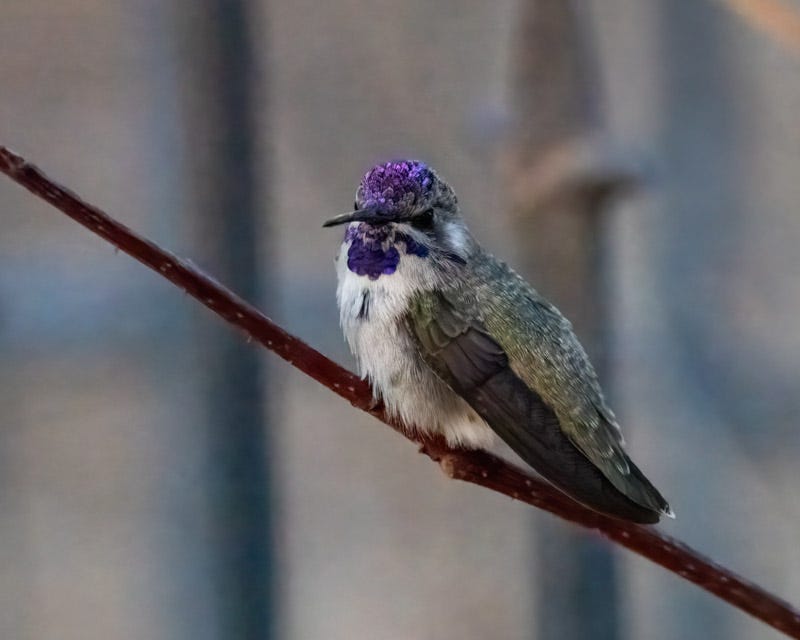
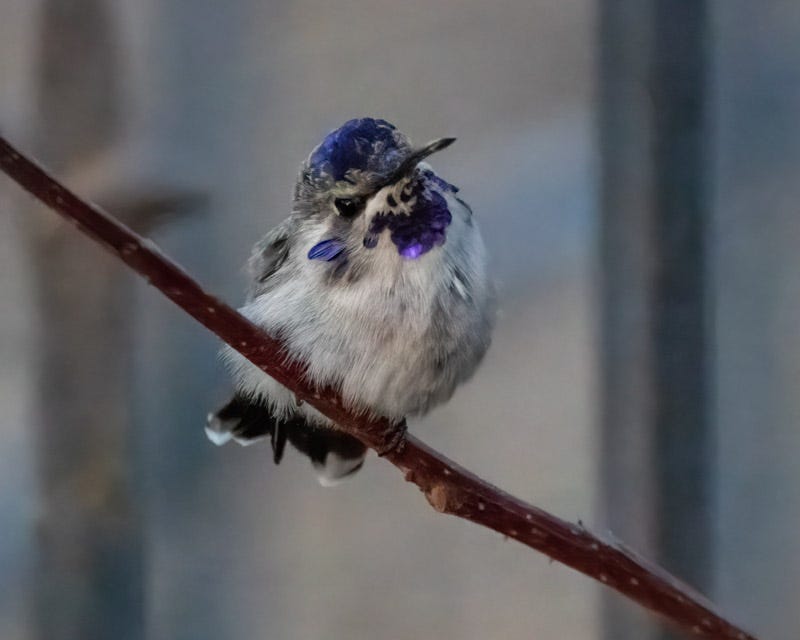

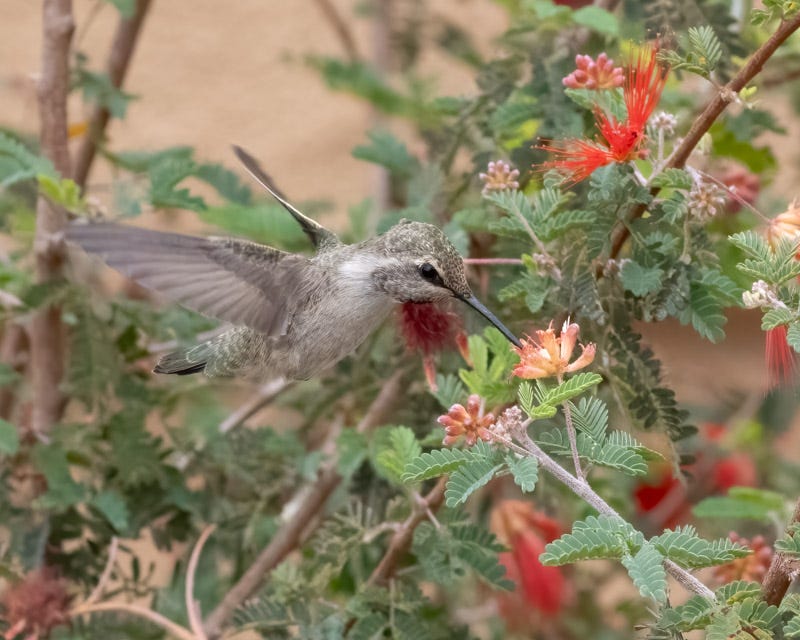
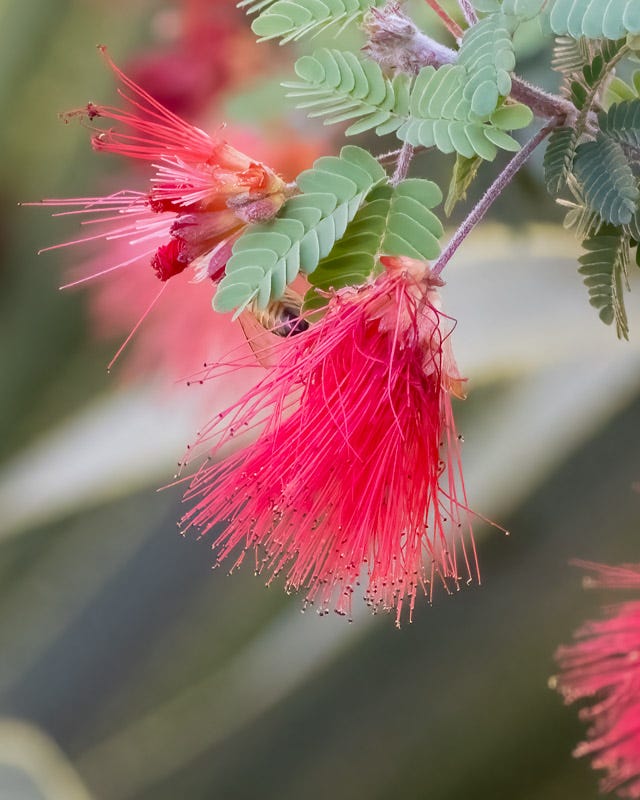
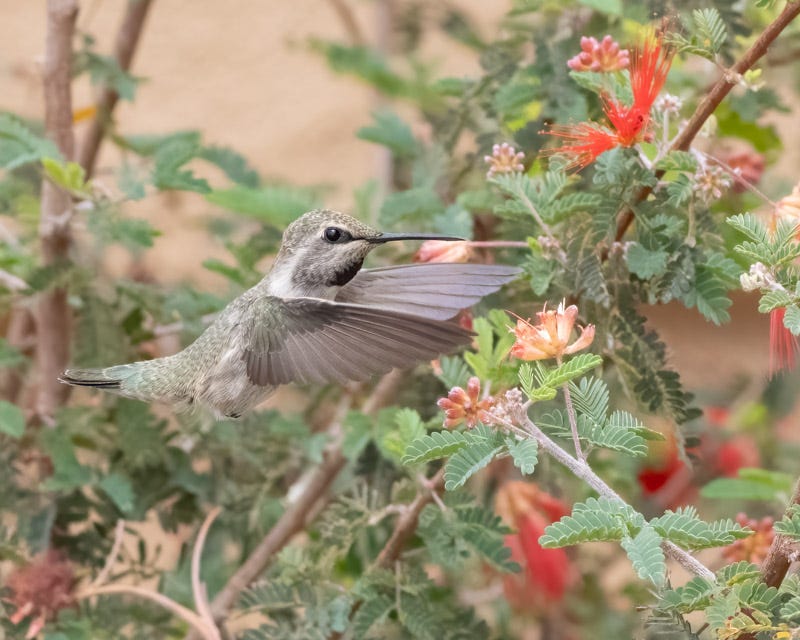

Thanks Dan, you are always so informative along with the great photos. Tiny Costas are beautiful and amazing little birds!
The colors in these photos are amazing. I love the watercolor that traveled around the world!